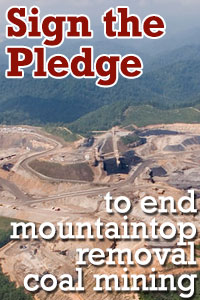News
Cradle to Grave: Making Connections From Appalachia to the Gulf Coast
Wednesday, February 11th, 2015
Cross-Posted from Daile’s Blog
By Daile Boulis
This past week I had the honor of attending the Extreme Energy Summit in Biloxi, Mississippi. From the event website:
“The Summit…will bring together a wide variety of leaders representing groups across the country who are resisting all forms of energy extraction, from small grassroots community groups working in frontline communities to large national nonprofits and everything in between. In addition to meeting and strategizing, this diverse and dynamic group of organizers will have the opportunity to tour and see the heavily impacted Gulf Coast region as a coalition of local and regional groups have graciously agreed to host us and organize a tour of communities impacted by energy infrastructure in the Mobile area.”
I was deeply affected by the tour that we took of the gulf region, from the Eastern Biloxi Mississippi Coalition of Vietnamese-American Fisher Folks and Families and how the BP Oil Disaster continues to affect their lives and livelihoods to the Wedgewood Community in Pensacola, Florida whose community is surrounded on three sides by seven (soon to be eight) landfills, with additional stops at the Chevron Refinery in Pascagoula, MS, the MacCaffie Coal Terminal in Mobile, Alabama and Africatown, Alabama.
There was a phrase I learned during the tour, “From Cradle to Grave”: the full journey of an extracted energy product – extraction, processing, distribution (both raw and refined), and waste.
I am fairly educated and familiar with how coal is extracted, particularly here in West Virginia. I have seen the processing plants and the coal trains. But I never thought it completely through to the distribution of the coal and the dispersion of the associated waste. I never thought about where the coal goes, or that as it travels its’ toxic dust and other by-products are spread along the way.
I learned that the removal of the coal from “my mine” is the “cradle”. The coal is transported by truck to be processed, typically very near where it is extracted. Then it is transported, generally by train, for immediate use, or for sale around the globe.
Port Terminal, Mobile, Alabama
The MacCaffie Coal Terminal, Port of Mobile, Alabama is huge. This is where much of our coal is transported to be shipped to countries around the world. In the shadow of this huge port isAfricatown. This small historic community deals on a daily basis with the toxic effects of coal dust, chemicals that leak from trains and barges transporting coal, tar sands, and oil, among other products.
 The terminal houses tank farms, open coal cars and shipping containers storing toxic extractive energy products as far as the eye can see – so many that if even the smallest percentage of them are leaking they have the potential to devastate not only Africatown, but the entire gulf region.
The terminal houses tank farms, open coal cars and shipping containers storing toxic extractive energy products as far as the eye can see – so many that if even the smallest percentage of them are leaking they have the potential to devastate not only Africatown, but the entire gulf region.
Which brings me to “…the Grave.”
Where did the sludge from the BP Oil Disaster go? When there is an environmental clean-up, such as the MCHM from the Elk River spill in Charleston, WV, what is the final destination for the disposal of such waste?
Wedgewood Community, Pensacola, Florida
Simple answer? Landfills. The final stop on our tour was a community in Pensacola, Florida known as Wedgewood. After listening to the presentation outlining the seven landfills and the hazardous waste they contain, I was genuinely concerned about breathing the air. I wish I were exaggerating. I was appalled that anyone had to live in these conditions. This was a nice neighborhood. A proud neighborhood whose property values are now so low that they can’t move away from the stench and the health risks. I can’t wrap my brain around the fact that someone, anyone, in their local, county or state government thought that it was appropriate, IS appropriate to locate these landfills on the very borders of this community.
Let me be clear: throughout the process, from extraction, to processing, transportation and disposal, people die. They die as a result of exposure to toxic by-products in their water, in their air. Our need to “keep the lights on” poisons our citizens, our neighbors, our families.
I wish I knew of a solution. Simply reducing our energy footprint would help, but not solve this issue. Requiring these industries to not only implement responsible practices for extraction, but holding them responsible for clean-up, repair and restitution would be a positive step. Renewable energy would go a long way towards being a solution. But even if new technology, clean technology, were implemented today, we would still have a toxic legacy that requires response.
“Cradle to Grave.” People, communities are dying. Don’t doubt it. Don’t minimize it. Own it. Do what you can about it.












